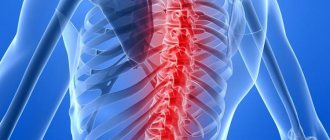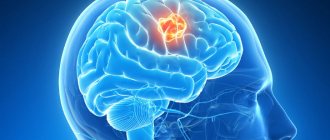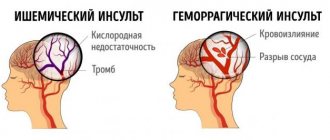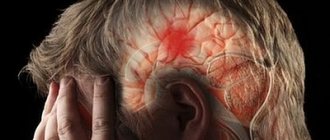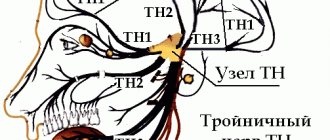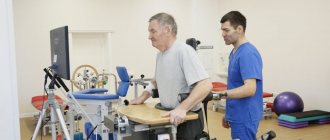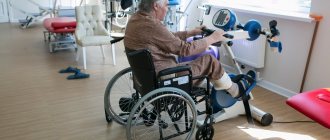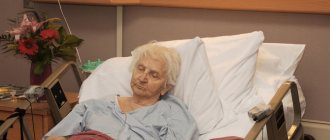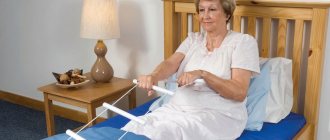Strokes are severe lesions of brain tissue caused by acute disorders of cerebral circulation. Against the background of prolonged spasm of the great vessels or their blockage, the ischemic form develops, and with rupture of the vascular wall and subsequent hemorrhage, the hemorrhagic form develops. In the first case, the symptoms may increase gradually, but in the second they always appear abruptly. At the same time, cerebrovascular insufficiency gives quite serious complications, one of them is paralysis and impaired fine motor skills after a stroke.
The recovery of such patients takes a very long time, but rehabilitation measures are needed as early as possible. And they need to be done under the supervision of experienced doctors. The specialists of the Verimed clinic will help the patient return to a full life.
What are fine motor skills?
Fine motor skills are clear, purposeful movements of the hands and fingers, controlled by the central nervous system. They are possible only with impeccably coordinated work of the brain, organs of vision and impulse-conducting nerves. There is an inextricable connection between motor activity and cognitive functions. Therefore, to fully restore fine motor skills after a stroke, not only the development of muscles and joints is required, but also exercises aimed at activating mental processes.
TRAINER FOR HAND FINGERS AFTER STROKE mobile version
| Exerciser for arms after a stroke “Bud”. Trains the hand and fingers, automatically detects the force on the fingers and changes the direction of bending and extension when the pressure on the fingers reaches 1 kg. Restore finger flexibility. Maintain vitality in the hand until the time when the brain itself resumes control of the hand. At home, in a calm home environment, without calling massage therapists, you can keep your hand healthy.
|
Exerciser for fingers after stroke
"Bud" is intended for recovery after a stroke or injury to the hand and fingers. The functionality of the simulator makes it possible to bend and straighten the fingers and thus train not only the joints of the hand and fingers, but also maintains the tendons and muscles up to the elbow in working and vital condition. There was an effect on the entire arm up to the shoulder, and speech improved. Most likely, this is due to the general recovery process in the brain, but it cannot be ruled out that the use of the “Bud” finger simulator was a certain stimulating benefit in general rehabilitation. The main question is: will the “Bud” simulator help in restoring your arm? The answer is yes it will help!
To what extent will the arm recover after training on the “Bud” simulator - IT DEPENDS ON THE DEGREE OF THE BRAIN DAMAGE! Even a hand without sensitivity, without the ability to move independently, will be “soft”: the joints are flexible, the tendons are stretched, the hand will not curl into a fist, but we cannot know to what extent the hand will recover. We honestly say that there are very severe brain lesions and the “thawing” of the hand takes a very long time and may not recover. But the “Bud” exercise machine after a stroke will definitely not allow your hand to curl into a fist to the point where your nails dig into your palm and nothing can be done about it, because time will be lost.
Are there any positive reviews about the Buton simulator? - Yes, I have! It’s nice to use the simulator when you realize that with its help a person gets behind the wheel again and returns to his “pre-stroke” lifestyle.
Recovery rate
Unfortunately, it depends not on the “Bud” post-stroke simulator, but on the degree of damage and the possibility of recovery of brain neurons after a stroke.
Essentially - a hand, even if it does not move after a stroke
, is healthy!
All functions of the hand and fingers were not affected by the fact that the neurons of the brain were damaged and cannot send signals to the hand so that the hand moves, and cannot receive signals from the nerve endings that are in the hand and were not damaged in any way by the stroke! The real task is to maintain mobility in the hand, to prevent the joints from becoming stiff, to prevent the tendons from tightening and clenching the hand into a fist, and to support the muscles of the hand with simple physical exercises. And the MOST IMPORTANT thing is to hope that the preserved, vital hand will be “seen” by the neurons of the affected brain. Because There are real facts, when after a stroke both arms and legs were restored, then you just need to HOPE, BELIEVE, WISH, ACHIEVE RECOVERY
.
There is no need to drive yourself into a situation where the brain, albeit slowly, has recovered, but cannot control the hand only because the joints physically no longer work, the muscles have atrophied, the tendons have clenched the fingers into a fist so that there is no strength to straighten the fingers! Help the hand, which, for now, “does not see the brain” and cannot independently be in a working, flexible, “soft”, living state. If the affected brain is enough to restore connection with the hand, then the preserved living hand will quickly “make friends” with new brain neurons and the dynamics of recovery will not be long in coming. Just help your hand “hold on” during the time when the brain cannot control it.
| The photo (on the right) is the result of missed time when it was necessary to support the arm (hand and fingers) with exercises, massage, and training exercises. It is possible to correct the situation! You need to “stretch”, straighten your hand and fingers on the clamp (passive simulator). If your fingers can still be straightened (with outside help), then time has not yet been lost and you can apply "Bud" finger exerciser after stroke . You can use the exercise machine at home, at a time convenient for you, without limiting your time. There is no need for daily, hourly payment to massage therapists; there is no need to “guess” the hour when you can see a massage therapist. The “Bud” simulator will always be ready for use at any time. The finger trainer will train, literally fill, pump up your hand with vitality. Even if at first the flexion-extension amplitude is not full (the “Bud” simulator monitors the resistance force of the fingers and does not “press” more than 1 kg so as not to harm the hand (soft impact!)), after several workouts there is always progress in the “softness”, “revival” of the hand. You will avoid curling your fingers into a fist and “stiffening” your joints. At the slightest cerebral attempts to control movement in the hand, both the hand and fingers will be ready for recovery. |
| Please note that the “Bud” simulator after a stroke is equipped with WHITE Velcro. To extend the service life, the edges of the Velcro sections are subjected to heat treatment (slight melting). The “Bud” finger trainer will always be at your fingertips; at any time you will be able to restore movement in your hand and fingers. As a rule, training on a simulator have a positive effect not only on the fingers and hand , but |
Pay attention to the condition of the arm that you are going to train and “revive” in the simulator. If the immobility of the fingers and hand lasted a short time, then, of course, there will be no problems. The hand is “soft”, the fingers straighten perfectly, they are easy to secure in the “glove” of the “Bud” exercise machine after a stroke. It is somewhat more difficult if the fingers are no longer allowed to straighten by “dried up” tendons! And the fingers are pulled together not only under the phalanges, as one might think! The tendons and muscles that are “responsible” for straightening the fingers extend to the elbow joint, and if the fingers do not straighten well, then this is a clear sign that the hand is beginning to lose its mobility. If you look closely, it becomes noticeable that the fingers, palm, and hand begin to curl up slowly but surely, curling into a fist. This means that it's time to pay much more attention to maintaining mobility, and therefore life in the hand! The simulator will greatly facilitate the task of restoring your arm! The trainer will give you the lion's share of your free time! It is enough to fasten your arm in the simulator and for 40 minutes three times a day, on the one hand your arm is restored, on the other hand, you have personal time that can be spent with great benefit.
There is no cure for CORONAVIRUS yet!
The goal is not to “bring” the virus to a sick, weakened person. To significantly reduce the chances of contracting Covid, you need to minimize contact with possible infected people, delay visits to recovery centers, call massage therapists less often (maybe, for a while, refuse to visit the patient with strangers!). You can organize exercise classes at home yourself!
Your hand and fingers will be in a natural, live exercise! Every lesson is a chance, a step towards restoring your hand. The “Bud” simulator for the rehabilitation of fingers is equipped with motors with a gearbox made of metal moving elements, which ensures reliable operation of the simulator even for long-term recovery after severe injuries or stroke. The safety of use is due to the low supply voltage, which eliminates any problems with the use of the “Bud” hand simulator.
Particular attention was paid to the long service life of the device, because... recovery may take more than one or two months. The severity of injuries and the severity of brain damage during a stroke significantly affect the time it takes for hand mobility to return to normal. For “collars” (injury of the cervical spine), for long-term use of the finger simulator, the “Bud” simulator may be suitable.
CALCULATOR
— Recovery, even after a moderate stroke, takes several months, rent of any exercise equipment is 700 rubles per day. This will amount to at least 40,000 rubles in two months! We offer you a simulator for 20,000 rubles, which will serve you faithfully for a year or more, helping with recovery!!!
Rehabilitation of limbs after injuries or operations can and should be associated with the desire of the patient himself to engage in restorative procedures. The simplicity of the recovery process lies in the fact that the person is in an adequate state and can reason logically. A different approach is necessary when, after a stroke, a person’s brain is damaged and recovery actions are no longer so simple. An example would be self-training, self-massage of a hand that has lost mobility after a stroke. It would seem that maintaining mobility is the way to restore the hand, but if you look in detail at the “mechanism” of movement, it doesn’t work out very well. T.K. To move the immobilized arm, the patient uses the muscles of the healthy arm, brain commands for flexion and extension are sent to the muscles of the healthy arm and thereby further “redirects” the brain to the healthy arm. The patient “teaches” the brain to send impulses to the healthy arm to move the motionless arm. Let’s not forget that during a stroke, connections between organs (including the arms and legs) and the brain are lost, and the degree of recovery after a stroke depends on the successful restoration and renewal of these connections. And independent exercises of massaging the “sick” hand with a healthy hand will keep the hand in a living, “soft” state, but will not lead to stimulation of independent movement in the hand from brain impulses. It is possible to force the brain to “pay attention” to an arm or leg that has been “disabled” after a stroke only by external influences. A massage therapist or an arm simulator or a leg simulator fully satisfies the rehabilitation conditions. Because Every movement, even forced, creates an impulse leading to the brain, then bending and unbending an arm or leg with a simulator means repeated attempts to “reach the brain.” The use of exercise equipment for fingers after a stroke “Bud” or exercise equipment for legs after a stroke “Shagonog” will help you to engage in recovery at home at any time convenient for you. You can learn more about the simulators on our website. We draw your attention to the “shagonog” simulator! We position this simulator for bedridden patients. “Shagonog” is easy to use and there is no need to move the patient anywhere. You just need to place an exercise machine under the problematic leg of a bedridden patient, secure the leg in a splint and the person lying down will begin to walk; during training, the pressure on the foot will correspond to the forces that will be in the leg during real walking. If it is possible to lift and sit down a person, then you can (and should) use a cheaper pedal exerciser with a motor. (A distinctive feature of the Shagonog simulator is its simple use for bedridden patients after a stroke.)
Comprehensive recovery of fingers after a stroke, after injury or surgery. It is very important to prevent your hand from “withering” and your fingers forming into a fist. After the acute phase of a stroke, when a period of stabilization begins, of course, you need to monitor your blood pressure and follow doctors’ orders, but we must not forget that all the muscles of the body that are not “loaded”, that do not work, begin to degrade and lose muscle mass. Without movement, joints become “overgrown” with salt deposits, which will sooner or later begin to stiffen. Without constant training, the tendons slowly but surely tighten, become shorter and pull the fingers along with them, which inevitably, without training, SLOWLY, IMPOSSIBLY will curl into a fist.
Changes occur smoothly and slowly, it can be compared to the growth of hair or nails. We SUDDENLY notice that we need to do something with our hair, we need to cut our nails. And in worries and problems, we put off, like, not very important, not primary problems for a later time. It is precisely at this time that the hand slowly loses its properties, and the functions of a healthy hand degrade! But she didn't have a stroke, did she? Why does the hand curl into a fist? Why does my brush sag? Why, instead of an instrument of comfort, we end up with, alas, a painful, painful part of the body? These are, of course, the consequences of a stroke! Which damaged the brain, but the stroke left the arm WITHOUT MOTION
and it (the hand) began to
slowly fade away.
Try not to reassure yourself: “We must wait until the hand “thaws”, “moves away”, “comes to life”!” We need to really assess the situation! What is important here is the OPINION OF A DOCTOR, who will be able to more accurately understand and assess the dynamics of recovery. If recovery after a stroke is dynamic and relatively fast, then of course you can and should just wait
, if possible, massaging your hand, periodically develop your hand with exercises.
It’s another matter if you notice signs of clenching your fingers into a fist.
, fingers
are difficult to straighten
. These are the first signs of insufficient finger movement and insufficient dynamic load.
The hand trainer will really keep your fingers in normal working condition. And not just fingers. After all, the fingers are controlled by the muscles that are located between the hand and the elbow, i.e. hand trainer for fingers
will develop both the fingers, but also the hand, and the muscles up to the elbow. Each flexion-extension cycle of the arm exercise machine affects the muscles, and each time the muscles send an impulse to the brain, reporting their movement. Each session on the simulator is multiple attempts by the fingers to “reach” the brain, repeated “demands” on the brain so that it “notices” the hand and fingers and begins to control them.
The site presents two hand trainers for use at home. These simulators are as simple as possible, safe, and, most importantly, ten times cheaper than similar devices for recovery after a stroke.
No need for a massage therapist, a qualified specialist! Any loved one can help fix the arm in the simulator and conduct a rehabilitation session. In any convenient position for the patient, you can exercise on the simulator. The main condition is the patient's comfort.
The “Bud” finger trainer works on four fingers, providing the maximum possible range of extension and flexion of the fingers. If the resistance of the fingers is more than 1 kg, then the machine will stop and start moving in the opposite direction. The thumb is also attached to the hand trainer
at an angle close to 90 degrees. This is a passive, but also very effective load on the thumb.
The Petal hand trainer trains the thumb exclusively. “Swings” the thumb with the maximum possible amplitude. The “Petal” finger trainer for fingers after a stroke or injury should be given attention to those who have the greatest problems in finger restoration with their thumb. Thumb rehabilitation The Petal simulator will most likely be in demand after surgery on the thumb or injury. On the “Petal” simulator, you can specify, when ordering, the force that the hand trainer exerts on the finger (the amount of force cannot be changed during training! Or it is specified when ordering).
Recovery after a stroke of a paralyzed hand (fingers).
The compression-decompression cycle is 14 seconds, or 257 times per hour.
The simulator will never get tired and will gently train your fingers.
The “Bud” simulator will not extend or bend the fingers to the full amplitude, in case of severe contracture (“shrinkage” of muscles and joints). But with each lesson, if the “rigidity” has not become irreversible, the fingers will be softer, the arm will open more.
Stroke Arm Test (click to check arm condition)
Pay attention to the “softness” of the hand and the flexibility of the fingers!!! Difficulty extending the fingers is a clear sign of “drying” of the tendons and “ossification” of the joints. This occurs due to lack of movement of the fingers. Even if there is no sensitivity, the fingers must be forcibly bent and unbent every day, trained.
| Restoring mobility after a stroke fingers are usually put aside “for later.” Stroke problems are very serious! And the flexibility of the hand and fingers begins to worry already at the stage of stabilization of the situation. As a result, the fingers cannot be straightened even with some force. Why did this happen? It’s just that in everyday life we don’t notice how much time our fingers spend in the “exercise”. We constantly bend and unbend them, load them with work, force them to touch, share sensations of tactility. In the state after a stroke, of course, there is nothing like that! And the fingers “stagnate”, “ossify”, the joints lose flexibility. What can and should be done? Perform a hand massage , fingers, therapeutic exercises, | Exercise machine for the arm after a stroke on one arm. Made either for the left or right hand. Price 20,000 rub. Attention! During the manufacture of the simulator, design changes are possible. (This is only 8-10 sessions of a massage therapist, i.e. payment to the massage therapist for one to two weeks! And recovery after a stroke can take at least several months! A simulator for recovery after a stroke is the development of joints and muscles at any time convenient for you time! The simulator will gently bend and straighten your fingers throughout the entire session, morning, afternoon, and evening.) The “Bud” post-stroke exercise machine is powered by a 220-volt network and is absolutely safe from an electrical point of view. Galvanic isolation guarantees and completely eliminates the entry of dangerous voltage on the simulator and on the patient. |
Attention! Evaluate whether it is possible for you to use the “Bud” simulator!
The hand should be “
SOFT
”, i.e.
Irreversible changes
in the ossification of joints and muscles yet If with outside help, albeit slowly, you can still straighten your fingers, then time has not yet been lost and the use of the “Bud” simulator is still possible. If, after a stroke, self-healing of the hand does not occur (the fingers gradually clench into a fist), then in order not to lose the functionality of the hand, either many hours of massages or the “Bud” simulator or similar ones are needed. With use SEVERAL HOURS A DAY!
Frequently asked question: “Is there a guarantee that massage or the BUD hand exercise machine will help?” - The answer is very simple! — There are real positive dynamics for almost everyone. Of course, the smaller the area of brain damage, the more noticeable the result literally in the first weeks of training. (The necessary condition we are talking about is at least three sessions a day for 40 minutes!!! and you will see the result!!!) With deep brain damage, of course, more time is required for recovery! And even in such cases, it is necessary to help the arms and legs that are not yet working with exercise equipment or massage. We must not allow the fading of vitality and physical condition in “numb” hands and feet. In no case should the situation be brought to the point of “ossification” of an arm or leg, because Unfortunately, it is almost impossible to return a hand that “hangs like a whip with fingers tightly clenched into a fist” to a “working” state. Stroke Trainer Gives Stroke Recovery Function
,
a support function after a stroke
, but a stroke is a very serious and insidious disease and, unfortunately, no one can give a guarantee of recovery, and we honestly say this!
The positive dynamics of the “Bud” simulator increases significantly
, if each training session asks the patient
to focus on the sensations that accompany the cycles of flexion-extension of the fingers.
(This information was received from several independent customers of the simulator.)
Do not distract the patient with any additional “irritants”
!
The brain was severely damaged after a stroke, help him! Let the patient, when using the “Bud” simulator after a stroke, think only about the mobility of his fingers
, let
him “listen” only to the thin nerve that connects the brain and fingers
.
Let the training be accompanied by the thoughts that this is not a simulator, but I am bending and unbending my arm!
From consolidating the impulses from flexion-extension of fingers in the brain to the ability to confidently control your fingers - there is only one small step left. But don't quit! Don't miss sessions! Reinforce and consolidate the results achieved.
When contracture begins (fingers are difficult to straighten), the “Bud” simulator will not injure the joints! Will train the hand at a SMALL AMPLITUDE
, in which the hand is not injured.
OVER TIME, GRADUALLY, the “softer” the hand becomes, the more it will open on the simulator. The “Bud” trainer will help you develop your arm, but NOT INSTANTLY!!!! Serious diseases cannot be cured “in one go”
! To overcome the disease, to achieve results, you MUST put in a lot of effort, be patient, and never lose faith!
IF YOU DO NOTHING, THERE WILL BE NO IMPROVEMENT.
Additional Information. When using the “Bud” simulator after a stroke, a DECREASE in arm swelling was observed. This is probably due to the increase in blood flow through the capillaries, which is activated during exercise on the simulator.
| How to secure your hand in a training glove. The finger holders should be as close to the fingertips as possible. In this case, the maximum amplitude of opening the hand will be achieved, all finger joints will be involved in the work. |
The “Bud” post-stroke simulator replaces the hands of a massage therapist and significantly reduces the cost of recovery sessions. The simulator has foreign analogues, for example ARTROMOT®-F
, which is positioned as a simulator for recovery from hand injuries and “
various contractures
.”
Cerebral
contractures can occur after brain damage.
A powerful effect was revealed not only on the joints and muscles of the hand, but also on the elbow muscles and muscles of the shoulder sector. The impulses sent by the affected brain to the arm in the initial stages of recovery have a chaotic, “blind” sending of commands to compress and unclench the muscles of the entire arm. PAY ATTENTION to the tension in the muscles of your ENTIRE ARM. If, when using the exercise machine, any muscle of the arm tenses and DOES NOT RELAX, then this is a clear sign that the connection between the brain and the muscle is NOT LOST!!!! This is a VERY GOOD SIGN
!!!
Such moments should not be missed, they are the most important in recovery!! And this time you MUST, MUST, not miss the moment and do additional exercises for flexion-extension of the arm at the elbow
(hold your elbow and bend the wrist away from you and towards you until the tension in the muscle disappears, or hold the wrist and raise and lower the elbow until it disappears tension in the muscle). In this way, you “explain” to the brain which impulses it should issue to compress the muscles and which to unclench. The brain must “learn”, remember, and learn again which impulses are responsible for what. (The brain learns to control the body again.) The initiator and catalyst for the process of restoring connections between the brain and muscles of the entire arm in this case is the “Bud” post-stroke simulator.
| We present to your attention a response from a website selling a foreign analogue of a finger simulator for recovery after a stroke. The “Bud” exercise machine is more than an order of magnitude cheaper! The “Bud” simulator for recovery of fingers after a stroke is positioned not only for use after a stroke, but also will help support and, if possible, restore the hands after a spinal injury. |
Feedback on the use of the simulator after a stroke “BUTON”:
“A completely immobile arm, when trained with the “Bud” simulator after a stroke twice a day for 40 minutes, became “obedient” to the patient in the shoulder joint!
Restoration and mastery of the motor functions of the hand began not from the fingers, but from the shoulder.” Those. the nerve receptors stimulated by the simulator helped structure the control of the shoulder and elbow muscles. Another review:
“A year passed after the stroke, the arm felt touch, but
was completely motionless from the shoulder joint
.
Using the “Bud” simulator for one month, “muscle fatigue” appeared in the arm, the patient began to feel the muscles of the arm.” Those. the fading muscles and reflexes of the hand began to recover, informing the brain not only about the EXISTENCE of
the hand, but also provoking painful sensations to intensify movement in the hand itself. It has been noticed that in some cases, when training on the “Bud” simulator, spasms of individual arm muscles begin. It's not scary! This is good! Because The interaction between the muscles and the brain is restored, the brain is “trained” - what impulses should be given and where so that the hand works like a healthy one. Of course, you don’t have to endure pain! You need to pause the activity and massage from fingers to shoulder to remove the spasm. Exercises on the “Bud” simulator will lead to the brain “understanding” what impulses tense and relax a particular muscle. After repeated “explanations”, the brain will have no choice but to control the newly “found” muscles, arm, fingers. This is our goal!
The “Bud” simulator for restoring the mobility of fingers after a hand injury, finger injury, or joint damage. After surgery, it is possible to use the “Bud” simulator to prevent dystrophy of the arm muscles and overcome painful manifestations when flexing and extending the fingers. The “Bud” post-stroke exercise machine is a very strong stimulator of brain activity. A huge spectrum of impulses comes not only to the fingers, but also to the entire limb. Sensitive monitoring of excitation, muscle tension in the arm, and additional exercises for flexion and extension of tense muscles help the brain return dynamics to the affected arm in a shorter time.
| ATTENTION! THE EXERCISER IS EQUIPPED WITH A GLOVE WITH VELcro!!! Exerciser "Bud" for two hands. Exercise machine for spinal injuries. Archive video. Posted for information on how to use the two-handed exercise machine. Price 23,000 rub. Attention! During the manufacture of the simulator, design changes are possible. (This is only 10-12 sessions of a massage therapist, i.e. payment to the massage therapist for one to two weeks! And recovery after a stroke can take at least several months! A simulator for recovery after a stroke is the development of joints and muscles at any time convenient for you time! The simulator will gently bend and straighten your fingers throughout the entire session, morning, afternoon, and evening.) The “Bud” post-stroke exercise machine is powered by a 220-volt network and is absolutely safe from an electrical point of view. Galvanic isolation guarantees and completely eliminates the entry of dangerous voltage on the simulator and on the patient. | For rehabilitation after a stroke, massage and therapeutic exercises for the fingers can and should be done several hours every day ! The real effect on the fingers and hand is noted by almost everyone who has used “Bud”. Any impact on the affected areas of the body is very useful for recovery after a stroke! The simulator after a stroke for the hand, fingers creates a tactile signal in the nerve endings and, if it can “break through” to a part of the brain that was not damaged by the stroke, sensitivity will appear! You will be able to move and control your hand and fingers! We must not allow the joints on the fingers to “ossify”! (On one of the forums, the doctor suggested the total time for therapeutic finger exercises - four hours a day!) |
A sign that you need to be more active in restoring your arm can be pain in the shoulder joint. SHOULDER JOINT LOSS
occurs due to the constant impact of a severely paralyzed arm on the joint. Gravity pulls the arm joint out of the shoulder. Unfortunately, this leads to severe pain, but this is not the worst thing! The fact is that there is a real reluctance, based on pain, to no longer make any attempts to recover. The arm will not be pulled out of the shoulder joint only when the arm-shoulder muscles support the arm and balance the force of gravity. It is necessary to rapidly use various means to restore the performance of the muscles of the shoulder and arm. And not the last resort may be the “Bud” simulator for recovery after a stroke. Impulses from flexing the fingers have a positive effect on the passage of signals to the brain throughout the entire arm, including the shoulder areas. It is simply necessary to influence all possible areas of the paralyzed body, to try to trigger the “paralyzed muscle-brain” interaction mechanism. The human body is very strong and viable, but it is necessary, and sometimes even necessary, to help the recovery processes with massage and exercise equipment.
HOW TO TAKE MEASUREMENTS
| The “BUDON” finger trainer after a stroke develops four fingers of the hand. Stay in a position that is comfortable for the patient for exactly as long as you deem necessary. The duration of rehabilitation of the hand and fingers after a stroke is determined by the severity of the patient’s condition and can last for several months. The BUD simulator bends and straightens the fingers as gently as possible up to a certain effort, in no case creating any pain for the patient. Please note that the electronics will bend and straighten your fingers exactly at the angle at which your fingers bend . An option is available to fix the working position of the simulator. |
| Option 1. The simulator is installed on a table or any convenient flat surface. Exercise machine after stroke can work IN ANY POSITION, but one condition must be observed - THE FRAME SHOULD NOT TOUCH ANYTHING WHILE MOVEMENT. |
The “Bud” finger trainer after a stroke will help develop fingers that are already susceptible to paresis (paralysis). The simulator automatically tracks the force with which it bends and extends the fingers. When a certain resistance from the fingers is reached (the joints do not allow either the fingers to be completely bent or fully extended), the simulator after a stroke for restoring the fingers begins to move in the opposite direction. Thus, the simulator tracks in each phase
at what angle can you bend or straighten your fingers? The force of the simulator for fingers after a stroke is chosen in such a way as not to cause distress to the patient in any way! The principle, the ideology of the simulator is that you can (and should) do a LOT of flexion-extension cycles! And, if the cycle ended with incomplete flexion or extension, nothing bad happened! The whole process is aimed at the fact that after 10,100, 1000 cycles the fingers (joints) should become more flexible and the post-stroke simulator for the fingers will closely monitor the positive impact and more complete extension of the fingers.
Medical research has established that nerve endings try to “break through” to brain neurons through neighboring areas that were not damaged during a stroke. Therefore, the movement of the fingers, repeated flexion and extension is another and very good positive effect on the entire body, which can be “noticed” by the brain
.
| A simulator after a stroke for restoring fingers. Two-handed option. Stands on both sides allow you to install the exercise machine after a stroke for a neck or spinal brace for both the right and left arms. |
Directions for use: Consistently! 1-Turn on the finger simulator after a stroke. (insert the plug into the power socket). When turned on, the simulator will take its original position. (fully open hand). 2-Press the button and set the finger support lever to a comfortable position for placing your hand on the machine. (Pressing the button turns the lever movement on or off.)
ATTENTION
3-You must try to secure all four fingers
at the very tips;
it is with this fastening that
the simulator will have maximum functionality
. If during the exercise the fingers (especially the little finger) fly out of the fastening, then, of course, you need to fasten the fingers a little deeper. The position of the hand during training and the depth of attachment of the fingers should be as comfortable as possible and selected individually. Practice has shown that ALL patients find a comfortable position for the arm and exercise machine for training.
| 4-Secure the hand with three elastic clamps so that the wrist is pressed against the table during operation of the simulator. Don't squeeze too hard!!! |
5-Secure the thumb so that it does not interfere with the movement of the finger simulator after a stroke. 6-Press the cyclic action button of the exercise machine.
After the procedure, press the same button to turn off the finger trainer after a stroke.
The weight of the simulator after a stroke for the fingers is 1 kg.
Within 6 months you can contact us for FREE troubleshooting of the simulator.
.
Provided that the simulator was operated under normal home conditions (the simulator should not be deformed, you yourself should not correct anything, either electronically or mechanically).
You provide us with a simulator - we fix it for free.
Shipping, when ordering, in case of breakdown is carried out only at your expense
! (In order to avoid unnecessary expenses, we recommend using SELF-PICKUP.)
Delivery methods throughout Russia:
Russian Post - cash on delivery. (You simply order the “Bud” simulator and, in about a week, you will receive the package.)
Pickup from Moscow. (You yourself will be able to see the excellent, effective functions of the simulator.) If not you yourself, then your relatives and friends will probably come to Moscow. Ask them to help bring an arm exerciser after a stroke.
The positive effect is confirmed even by the fact that a healthy person
, who has used the BUD simulator for at least 15-20 minutes, feels
a clear surge of energy
in the hand,
tone increases
(as if an intense massage was performed!!!).
This information is for informational purposes only.
and under no circumstances is it a public offer.
The finger post-stroke exerciser is designed for home
! Very easy to use.
Symptoms of impaired hand motor skills after a stroke
Clinical signs of motor activity disorders are:
- a sharp decrease in muscle strength (until complete disappearance);
- rapid muscle fatigue;
- severe impairment of joint mobility due to contractures;
- impaired coordination of movements;
- reduction or loss of local sensitivity.
Mobility and coordination may be further affected by pain and tissue swelling.
What interferes with the recovery of motor skills after a stroke?
Improving the motor activity of the hands and restoring fine motor skills after acute cerebrovascular accidents is a rather complex process. It can be accelerated by the use of effective treatments, or it can be slowed down. The reasons for the slowdown (and sometimes impossibility) of rehabilitation may be:
- incorrect diagnosis;
- late treatment;
- serious disturbances in the nutrition of local tissues (circulatory disorders);
- injuries or chronic pathologies of nearby areas;
- depressive and apathetic states of the patient;
- other mental disorders.
How is motor skills restored?
Combating hand motor dysfunction after a stroke requires an integrated approach. It is important to start treatment as early as possible. Timely therapy gives a much greater chance of quickly achieving positive results.
Please note: It is important to remember that every day without training contributes to the formation of a stereotype of lack of movement in the central nervous system. The direct consequence is tissue trophic disorders; Muscle atrophy and bone decalcification develop.
The main methods for developing hand motor skills in the recovery period after a stroke are massage and gymnastic exercises. Hands and fingers contain a huge number of nerve endings. If there is not an adequate signal for movement from the central nervous system, it is important to direct it from the fingers to the brain. Local massage prescribed to patients helps restore the transmission of nerve impulses - the so-called. reflex arc. In addition, the physical effect on tissue helps to improve local blood flow (microcirculation) and, accordingly, improve tissue trophism. Thanks to professional massage, used in combination with other techniques, you can quickly restore the ability to make active, precise movements, as well as tactile sensitivity.
Another important point when restoring fine motor skills after a stroke is regular exercise. Such exercises serve to prevent further decline in motor activity, prevent the development of muscle and joint contractures and promote functional restoration. Regular classes under the guidance of doctors help patients after a stroke quickly adapt to living conditions. The possibility of complete self-care is one of the most important tasks of rehabilitation techniques.
All exercises must be performed with both hands synchronously. Usually the mobility of one of them is impaired, and symmetrical actions will significantly speed up recovery. The duration of gymnastics should be no more than 8-10 minutes per hour, so as not to develop significant fatigue. It is important to repeat the set of movements regularly in order to re-form the muscle reflex and motor stereotype.
Examples of exercises:
- Clench your fingers into a fist, increasing your efforts in the final phase of the movement. Slowly unclench them, trying to imagine the action of each muscle.
- Place your hands on a horizontal surface with your palms facing up. Spread your fingers a little. Raise your little fingers while trying to keep the other fingers still. Lock them in this position for 3-5 seconds and relax. Perform a similar exercise sequentially for all other fingers.
- Place your palms on the table in the same way as in the previous exercise. Alternately make circles (clockwise and counterclockwise) with raised fingers, starting with the little finger.
To develop fine motor skills when recovering from a stroke, it is useful to use available materials. An excellent effect can be achieved by such actions as sorting through cereals, modeling from plasticine, fastening buttons and tying knots in a rope.
What exercise equipment can be used after a stroke: types of exercise equipment
Depending on the severity and type of neurological manifestations, a specific apparatus for training in a medical institution or a simulator used at home is selected.
Mechanotherapeutic
This is a very diverse group, which includes mechanical means that ensure the development of joints and muscles. Such devices are driven directly by the patient’s movements or by an electric motor, providing passive muscle work with a gross reduction in strength. Depending on what skill needs to be restored, the following simulator options are used:
- Platforms, step and stabilization platforms are necessary for teaching the skills of standing, walking, and maintaining balance;
- Training seats form the correct algorithm for getting up from a sitting position;
- Exercise bikes provide mobility of all joint elements of the lower extremities and different muscle groups of the legs affected after a stroke;
- Similar devices are used to train arm muscles;
- Training beds and verticalizers are necessary for people with severe neurological deficits to acquire initial motor skills and correct vestibular disorders.
Important!
Mechanotherapy has a number of contraindications: severe deformation of the limb, formed contractures, inflammation in the tissues of the periarticular area, the presence of blood clots in the deep veins, severe osteoporosis. Only a doctor can prescribe such procedures.
Devices for joints
To restore mobility to joints, either complex simulators designed to train the entire upper or lower limb at once, or monofunctional devices aimed at the rehabilitation of one joint are used. In the first case, the equipment is usually quite bulky; it is used in specialized medical institutions. To develop one joint, small devices are used that can be successfully used at home. Usually they train several movements in one joint at once. For example, dorsiflexion and plantar flexion, rotation at the ankle joint.
Helpful advice!
To make the exercise on the simulator more fruitful, it is advisable to massage the limb before so that the muscles relax and respond adequately to the load.
Myostimulators
Such devices use electrical impulses of a certain frequency and strength to influence the affected muscle fibers. Myostimulation is necessary to relieve muscle hypertonicity and return them to normal function. It seems to “replace” the impulses from the brain center that are missing after a stroke and helps restore contractility, extensibility, and the ability of muscles to relax. This procedure is recommended before starting active exercise so that high muscle tone does not interfere with training.
Robotic technology
This is complex equipment that imitates the movements of the limbs, receiving a converted signal from the brain. Using sensors, the machine perceives nerve impulses from the body and begins to move along with the injured limb fixed in it. Doctors recommend using such devices for severe paresis and paralysis, when active movements in the muscles are practically absent.
The robot helps “switch on” muscle memory and allows for feedback from the moving limb to the areas of the brain that are responsible for it. This activates the neurons in the area, and they gradually begin to restore their function. A similar principle is called biofeedback and is widely used in rehabilitation.
The influence of psychological attitude in the development of hand motor skills
A stroke often becomes a real tragedy for both the patient and his family. Brain damage provokes a decrease in mental activity and emotional lability. The patient can, as it were, “give up” on himself; he develops indifference, periodically replaced by outbursts of irritability and even anger. Apathy can be so great that a person does not want to do any exercises, try to get up, or move in any way.
To the objective reasons for the decrease in psychological activity are added internal experiences caused by a change in the usual lifestyle, the inability to look after oneself, and make some kind of global decisions. Immobility, isolation, fear of becoming a burden, fear of the future turn an active and freedom-loving person just yesterday into a completely weak-willed and apathetic one. He loses faith in his own strength, the possibility of developing hand motor skills and returning to his former life. Against this background, depression may appear, which will only worsen the situation. Such a person definitely needs not only the moral support of family and friends, but also the help of a doctor.
The experience of psychologists and psychiatrists allows us to quickly and accurately determine the root of the existing problem and find the “key” to both the patient himself and his relatives. Specialists will select the correct treatment regimen that will help motivate the patient to perform the necessary exercises, eliminating the main manifestations of apathy, depression and other mental disorders. And with faith in a speedy recovery, the restoration of fine motor skills of the hands after a stroke will go much faster.
Don't let a decadent mood ruin your future life - just call us now!
Therapeutic exercises after a stroke
The use of therapeutic exercises after a stroke allows you to restore the patient’s motor and support function, returning him to normal life. At the first stage of the recovery period, therapeutic exercises are performed in the hospital under the supervision of the attending physician.
After discharge, health-improving exercises are carried out under the supervision of the patient’s family and friends. Relatives of the patient must follow certain rules, which significantly increase the chance of a full recovery:
- Exercise after a stroke should not be accompanied by painful sensations, especially their intensification. If a relative still has minor pain, after a few sessions they will subside - the body will get used to physical activity, which will make doing a set of exercises much easier.
- Before performing therapeutic exercises after a stroke, the body must first be warmed up. A shower or hot bath works well for this. If they are not available, you can use a burner that is applied to the area being restored. This procedure can reduce pain and stiffness in muscle tissue.
- The patient should begin exercises with caution, gradually increasing dynamics and amplitude. A relative or loved one needs to monitor the progress of physical education to avoid pain or unpleasant consequences.
- A complex of physical therapy exercises should be performed daily. The patient must be provided with all the conditions for exercise to become a habit. Exercising every day will speed up the recovery process.
The main advantage of rehabilitation exercises after a stroke, with the help of which an improvement in the general condition of the patient is achieved, is the saturation of paralyzed parts of the body with blood. Correctly performed exercises help restore muscle memory and activate blood vessels.

